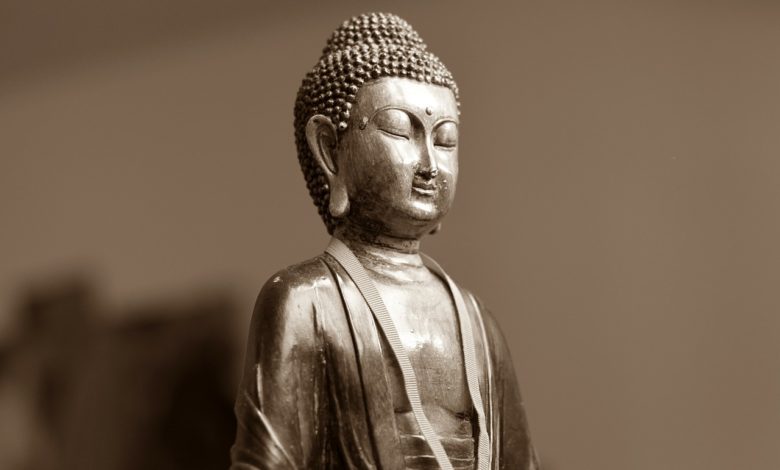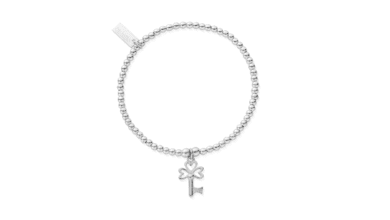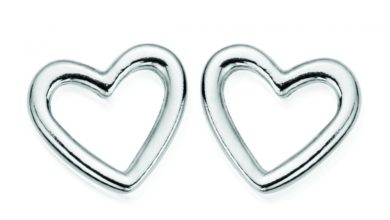75% of Brits ‘unaware of meaning’ of their jewellery, finds study

Register to get 1 free article
Reveal the article below by registering for our email newsletter.
Want unlimited access? View Plans
Already have an account? Sign in
Britons are sharing unintentional messages and sporting ancient and religious symbols with meanings they are unaware of, according to new research.
The survey of 1,000 UK adults, carried out by ChloBo, a British boho-luxe jewellery brand found that 76% were unaware of the meaning and significance of popular ancient symbols.
81% of Brits were unable to identify the Hamsa sign, an ancient middle eastern symbol often worn by on jewellery by Jennifer Anniston and Heidi Klum, whilst 88% could not identify the Om/ Pranava symbol, commonly used in Buddhist and Hindu beliefs, and often worn by Miley Cyrus.
77% of Britons failed to identify the Ankh symbol, recently sported by Beyonce in her most recent music video. Whilst the Jewish symbol, Chai faired no better with 94% of respondents being unable to identify the symbol of life.
Respondents were better at identifying ancient figures – more than three quarters (79%) were able to identify Buddah, the enlightened one, and founder of the Buddhist way of life. 63% of respondents recognised Ganesh, the Hindu god depicted with the head of an elephant.
Brits also fared better at identifying zodiac symbols, with 52% able to identify at least six of the 12 signs of the zodiac.
Jo Sass, brand communications director at ChloBo said: “It’s interesting to see just how many people are unaware of the significance of symbols they are walking around wearing. Whilst we continue to explore a wider variety of fashions and cultures, people are simply adopting symbols, patterns and designs for aesthetic reasons, and are failing to understand their deeper meaning.
“The symbols adopted and worn by many for fashion reasons actually hold a lot of significance and meaning, and are based on positive philosophies of life found in the world’s many cultures. If Britons researched the symbols and their meanings first they may feel an even stronger affiliation to their meanings beyond the celebrity trend.”
Women were better than men at identifying cultural symbols, however men (26%) performed better at recalling the meaning of the symbols commonly used in fashion and jewellery.
[box type=”info” align=”” class=”” width=””]Least identifiable ancient symbols
Chai – 6%
Om – 12%
Eye of Horus – 18%
Hamsa – 19%
Ankh – 23%
Lotus Flower – 42%
Ganesh – 63%
Star of David – 78%
Buddha – 79%
Dove – 87%
A guide to the cultural significance of jewellery symbols:
Hamsa
The ancient Middle Eastern talisman symbolises the hand of god, and is a protective amulet that is believed to bring its owner good luck, happiness, and good health.
Om/ Pranava
The symbol, commonly found in yoga is derived from Buddhist and Hindu beliefs, and is called Pranava, which translates to ‘it infiltrates life and runs through our breath’. It is a primordial sound and represents god, creation and oneness.
Buddha
The Buddhist way of life is based on the teachings of Buddha, the term means ‘one who is wise’, who holds a state of intellectual and ethical perfection. The term literally means enlightened one, or knower.
Ankh
There are multiple interpretations of this symbol, however the Egyptian’s believe the ankh represents the Nile. Other interpretations claim the looped cross symbol represents eternal life. It is also referred to as the crux ansata, which translates to the ‘key of life’.
Chai
This Jewish symbol means life and symbolises the importance and appreciation of life. It is made up of two Hebrew letters, chet and yud, both of which have significance and mean good luck.
Ganesh
Ganesh is the Hindu god with great intellect and is often depicted with the head of an elephant. Use of the symbol is believed to remove arrogance, obstacles, narcissism, and selfishness.
Star of David
This Jewish symbol, also referred to as ‘the shield of David’ has six sides which reflect the belief that god rules over the universe and protects it from six directions, north, south, east, west, up and down.
Dove
The dove appears in Judaism and Christian culture, and signifies love and peace. The dove is a messenger and is often depicted with an olive branch in its beak.[/box]







